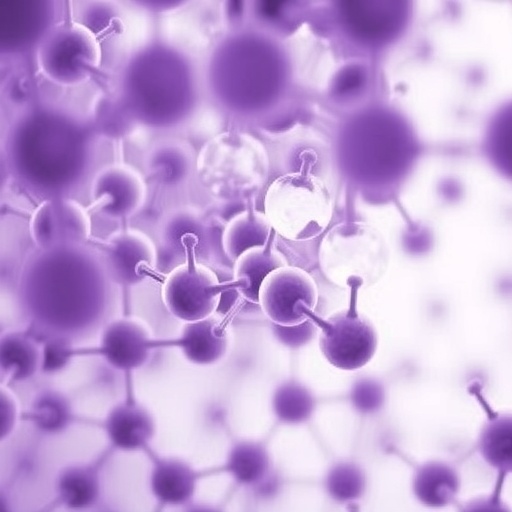A study performed by Brazilian researchers and published in the International Journal of Biometeorology showed that falling temperatures may be accompanied by rising numbers of deaths from stroke, especially among people over 65. The authors also found that in the case of older people, the incidence of stroke associated with colder weather was higher among women.
With the support from the São Paulo Research Foundation – FAPESP, researchers at the University of São Paulo (USP) and the Catholic University of Santos (Unisantos) used death records and meteorological data for the period 2002-11 in São Paulo City, Southeast Brazil.
To find out whether temperature variation correlated with stroke mortality in São Paulo, geographer Priscilla Venâncio Ikefuti used data collected by the city's Death Records Improvement Program (PRO-AIM). The principal investigator for the study was Ligia Vizeu Barrozo, a professor in the University of São Paulo's School of Philosophy, Letters & Human Sciences (FFLCH-USP).
Time series analysis showed that there were 55,633 deaths due to stroke in São Paulo between 2002 and 2011. A breakdown of the data by subtypes of stroke pointed to 12,183 deaths from ischemic stroke and 17,250 deaths from hemorrhagic stroke, for a subtotal of 29,433. The difference between this and the total sample (55,633) consisted of deaths from unspecified types of stroke or other cerebrovascular diseases.
Results
Cross-referencing of the stroke mortality data with mean temperatures for São Paulo City in the period showed a higher risk of stroke when mean temperatures were below 15 °C.
Relative risk was not statistically significant for mean temperatures in the range of 17 °C-24 °C. However, when mean temperatures exceeded 26 °C, the risk of ischemic stroke was significant for men over 65.
In the case of hemorrhagic stroke (the most severe subtype), lower temperatures were found to be a risk factor for both men and women, especially below 10 °C. Among over-65s, lower temperatures represented a higher risk of hemorrhagic stroke for women. This finding was unexpected and surprised the researchers.
"At the beginning of the study, we thought pronounced temperature variability, whether in a warmer or cooler direction, would correlate similarly with both stroke subtypes. In other words, there would be more deaths from both subtypes on very cold or very hot days. That's not what we found, however. In the case of hemorrhagic stroke, cold is a far more important factor, especially for women," said Ikefuti, who is currently employed by the São Paulo State Department of Health's Epidemiological Surveillance Center (CVE).
The finding that stroke is a more frequent cause of death among over-65s could be explained as due to diminished metabolism in the elderly. In response to changes in temperature, older people are less capable of maintaining homeostasis, the tendency to resist change in order to maintain constant physiological conditions necessary to survival.
"We also found that for all cases of stroke, and hemorrhagic stroke in particular, women are more vulnerable than men," said the FAPESP-supported researcher. "The data also show that stroke mortality is higher among women on average, albeit slightly. The relative risk of having a stroke in correlation with mean temperature variations was also higher for women than men. Similarly, lower mean temperatures affected women more than men in respect of both stroke subtypes."
Stress due to cold, she explained, results in increased blood viscosity and platelet count, raising arterial blood pressure enough to pose the threat of hemorrhagic stroke.
The researchers note that recent studies have pointed to the key reasons for which women are more susceptible than men to stroke. Women's health is more influenced than men's by such risk factors as diabetes and high blood pressure because women differ from men in a multitude of ways, including anatomy, vascular biology, immunity, neuroprotective factors, coagulation, hormonal profiles, vascular risk factors, lifestyle, and societal role.
According to Alfesio Luis Ferreira Braga, a Professor at Unisantos who co-authors the study, another important explanation for the higher risk of stroke among women is menopause, when the body produces less estrogen, the hormone that stimulates or controls the development and maintenance of female characteristics. Lack of estrogen during menopause subjects women to a higher risk of vascular disease, among several other conditions.
"Our study contributes to the understanding of the impact of temperature on stroke mortality in a tropical country, where temperature might be assumed not to be a concern regarding the risk of stroke. It proves that isn't the case, at least not in São Paulo City," Braga said.
"Although the city is in a subtropical region, so that mean temperatures are higher than in countries with a temperate climate, substantial daily temperature variations and the occurrence of cold fronts or heatwaves are indeed risk factors for stroke, especially among the elderly, and above all among women."
Methodology
Mean temperatures were used instead of highs and lows because they corresponded to the average of several observations made on the same day and were considered a good estimate of exposure to heat or cold, according to the researchers. The mean air temperature in São Paulo between 2002 and 2011 was 21 °C, with a range of 15 °C-25 °C depending on the season. Daily air temperature and humidity readings were based on data collected from USP's weather station, run by its Institute of Astronomy, Geophysics and Atmospheric Sciences (IAG).
To adjust the data for the effects of air pollution on mortality, daily 24-hour averages of particulate matter, ozone, sulfur dioxide and nitrogen dioxide were collected from 14 stations operated by CETESB, the São Paulo State Environmental Agency, around the city.
The FAPESP-funded study carried out statistical analysis of the data using quasi-Poisson regression in order to estimate the effects of mean temperature on stroke mortality in the total population and among over-65s.
###
About São Paulo Research Foundation (FAPESP)
The São Paulo Research Foundation (FAPESP) is a public institution with the mission of supporting scientific research in all fields of knowledge by awarding scholarships, fellowships and grants to investigators linked with higher education and research institutions in the State of São Paulo, Brazil. FAPESP is aware that the very best research can only be done by working with the best researchers internationally. Therefore, it has established partnerships with funding agencies, higher education, private companies, and research organizations in other countries known for the quality of their research and has been encouraging scientists funded by its grants to further develop their international collaboration. For more information: http://www.fapesp.br/en.
Media Contact
Joao Carlos da Silva
[email protected]
55-113-838-4381
@AgencyFAPESP
http://www.fapesp.br
http://agencia.fapesp.br/28246
Related Journal Article
http://dx.doi.org/10.1007/s00484-018-1554-y




